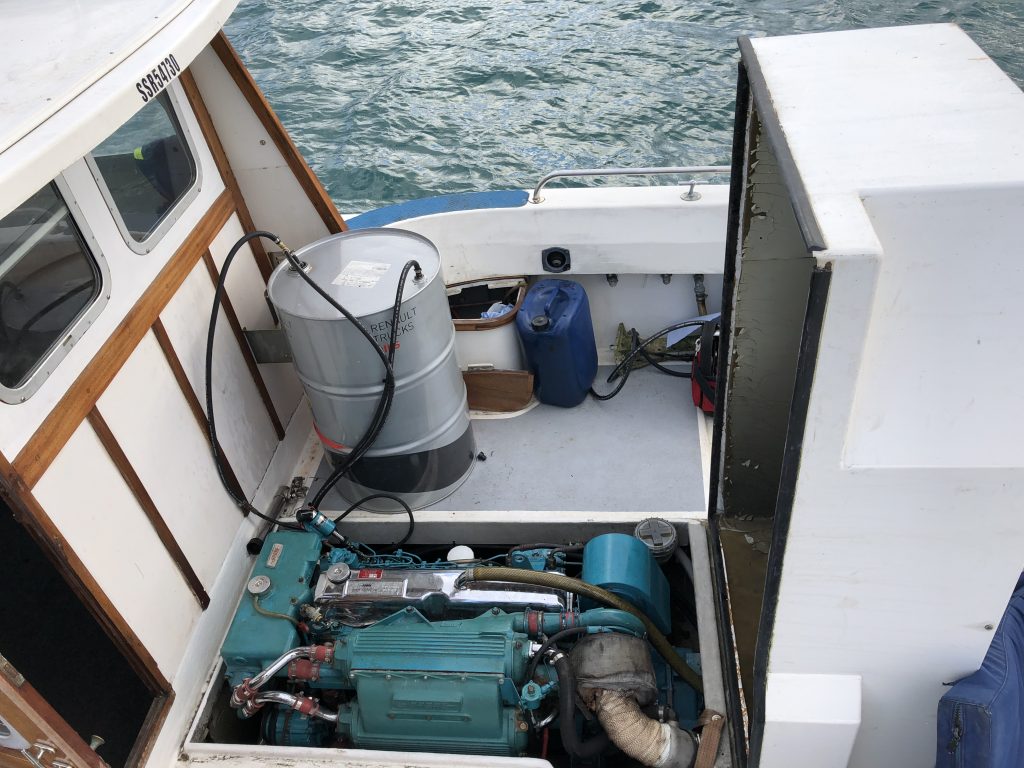Diesel bug is a cause of many break downs for both sail and motor yachts alike. In this article I am going to explain what it is. Then, I am going to explain how you can check for it and prevent it.
What is Diesel Bug?
So what is diesel bug then? Diesel bug is the term used to describe several types of organism that live in diesel fuel and contaminate it. It will clog your filters, wreck your engines and destroy your fuel tanks. These bacteria enter the fuel tank and live in an environment that feels like their equivalent of the Copacabana during Mardi Gras week.
They live on any water in the tank and feed off of enzymes in our modern day bio fuel diesel. Water in the fuel tank is heavier than the diesel fuel and sinks to the bottom of the tank. Creating a layer between the water and fuel that the diesel bug sees as pool party.
The bug will live in any temperature between 5 and 70 degrees Celsius with about 30 degrees being the sweet spot where the bug will be rampant. There’s over 100 types of these organism and some of them are air born.
Now you know what it is, take a look at what it can do………

Pretty gross isn’t it? This photograph is from a fishing boat that I had to deliver from Jersey to the UK. It’s the primary water separating filter and it’s FUBAR. Obviously we didn’t get very far.
Diesel bug creates a bi product of the exact black / brown sludge you can see here. It will destroy filters, block fuel lines, destroy injectors or worse, the fuel pump and could mean the fuel tank needs to be replaced.
This can quickly lead to repair bills in excess of £2000. If you break down at sea as a result of this bug, the results could end up being worse than an engine repair.
How to spot the possible signs of diesel bug.
The most obvious sign is that the engine stops. You can get some early warnings though if your vigilant. It’s a great idea to have see through bowls on fuel filters so you can see if there is any water in the fuel. You will also be able to spot any debris in the fuel. This is a great thing for you to keep an eye on as you will detect the start of a problem before the fuel reached the engine.
If you have a filter with a metal bowl then make sure you drain off a little fluid regularly to keep an eye on the fuel’s condition.
Apart from this, a sluggish response from the engine, missing it’s normal rhythm, excessive smoke from the exhaust or trouble starting could be a cause of diesel bug.
How can you prevent diesel bug?
Diesel bug thrives on the fuel in the tank but it needs to have the water too. So you have to try and prevent water in the tank. Makes sense right? If there is space in the tank then water will form with condensation. A simple way to prevent that from happening is to keep the tank full. Especially if the boat is to be left for a long time. But you have to keep the tank full. For example, it can be a great idea to set your diesel heater to run periodically to put some heat through the boat. Obviously this is going to use fuel though and create space for condensation.
Another potential source of the problem can be your jerry cans for spare fuel. If the fuel in the can has been there a long time, then there could be bug or water in the can. Filter funnels can be a good way of separating water and debris from fuel as it is poured from a can.
As I mentioned to you earlier, regular inspection of the fuel filters is a good idea. If it’s your own boat you can install a desiccant filter on the filler pipe. Also make sure your breather pipe has a proper swan neck on it to prevent water coming in.
What if you have Diesel Bug already?
You can get biocides that will treat the fuel but if there is bug in there this will only prevent further growth. It won’t kill it. You will have to clean the system from the filler cap to the engine. There are professionals that will do this for you. On smaller engines it will be more economical to throw the fuel away rather than try and treat it. The tank is the worst problem due to accessibility. It will need to be pumped out and thoroughly cleaned. On the fishing boat I had to deliver, we needed an entire new fuel tank once we got back to the mainland. We had to bypass the tank completely during the delivery by rigging a separate drum as a tank. But that’s a whole other story!

Remember, prevention is definitely better than cure. Keep your tanks full, inspect your fuel filters regularly and make sure you are only introducing clean fuel to the system.




Thanks Noel , this is very important to us , we are new to this and have topped up tank and will check fuel filters next time , we are all engine and no sails at the mo !